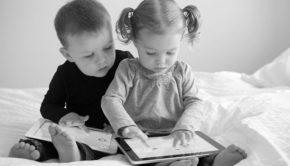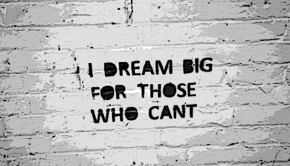Teaching Tolerance
Parenting Tips with…
Melinda Wenner Moyer | Slate Magazine
Teaching Tolerance – How white parents should talk to their young kids about race.
Last summer, my family moved from Brooklyn to a small town in the Hudson Valley. We love our new life, but one thing about the community is not so great: It’s predominantly white. What will it mean in the long run if my white children don’t see and befriend people who come from different racial backgrounds? And are there steps I can take to instill racial sensitivity and acceptance in my kids despite the fact that they’re growing up in an ethnic bubble?
To find out, I dug into research on the causes of racial bias and talked to developmental and social psychologists, race-relations researchers, and Africologists. The good news is that the answer seems to be yes—there are things I can do to keep my kids from harboring racial prejudice. Namely, I can talk to them about race.
First, a caveat: I’m writing this article as a white parent with white kids living in a mostly white neighborhood. I know that my experiences, perspectives, and considerations differ markedly from those of parents with different ethnic backgrounds living in different situations, and I also realize that I know nothing about the racial landscape that minority parents have to navigate with their kids. For many minority parents, talking about race is not an option—it’s essential in helping their children move through a world that sees a “black kid” and not just a kid. Although I talked to researchers with diverse backgrounds while reporting my piece, I’m guessing that my findings and advice will apply predominantly to white parents like me. Still, I would love to hear from all readers on the issues discussed in this column, so please, send your thoughts, advice, and feedback to melindawmoyer@gmail.com.
“White parents seem very, very resistant to talking about race—even really liberal ones.”
Kristina Olson, University of Washington
In their book Nurture Shock, journalists Po Bronson and Ashley Merryman told the story of Birgitte Vittrup Simpson, a University of Texas at Austin Ph.D. student who in 2007 recruited 99 white families to participate in a study—the basis for her doctoral dissertation—that involved asking them to talk meaningfully about race with their kids.* Five families immediately dropped out when they heard what they had to do. Nine out of every 10 of those who stuck with the study admitted at the end that they did not have truly in-depth conversations with their kids on the topic.
Why? I’ve avoided talking about race with my kids mainly because I’ve thought that racial bias is learned by direct instruction and imitation—and that if I don’t talk about race or act in explicitly racist ways, my kids won’t pick up prejudices. My sources told me that this notion is pretty common; research suggests that nonwhite parents talk about racial identity much more frequently with their kids than white parents do, but that even minority parents often avoid talking about racial differences. “There’s this idea that if you do call attention to race at a young age, you’re poisoning kids’ minds,” says Erin Winkler, chair of the department of Africology at the University of Wisconsin, Milwaukee.
This theory makes sense. In fact, it’s what social learning theorists believed for a long time, and why so many parents strive to make their children “color-blind.” But over the past 15 years, research has supported a different idea: that children start assigning meaning to race at a very young age. When researchers presented 30-month-olds with pictures of children of various races and asked them to pick who they would want to play with, the toddlers were more likely to pick kids of their race. Likewise, when sociologists Debra Van Ausdale and Joe Feagin observed kids in an urban day care center for 11 months, they found that children as young as three excluded other kids from play based on their race and used race to negotiate power in their social networks, as they described in their 2001 book The First R: How Children Learn Race and Racism.
Why does this happen? Kids actively try to understand and construct rules about their environment. As they do, they engage in what is called transductive or essentialist reasoning, which means that they simultaneously categorize people and objects according to multiple dimensions—so they might believe, wrongly, that people who have the same skin color have similar abilities or intelligence. They also notice class-race patterns—for instance that white people tend to hold privileged jobs or positions (or play them on television). One study found that by age 7, black children rated jobs held by blacks as lower in status than jobs held by whites. In other words, as Winkler wrote in a 2009 paper, “children pick up on the ways in which whiteness is normalized and privileged in U.S. society.”








